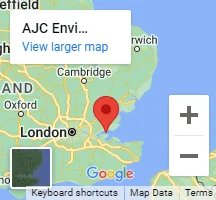The presence of asbestos, a mineral that was commonly used in construction in the past, can pose a considerable danger in many older buildings. Property managers, construction professionals and health and safety regulators need to be aware of the risks associated with asbestos. Surveys play a role in identifying and assessing the amount of asbestos-containing materials (ACMs) in structures. These surveys provide information for conducting a risk assessment and developing an effective plan to manage asbestos and increase asbestos awareness.
In the UK, raising awareness about asbestos is a concern because many buildings still contain materials that include asbestos. Initiatives like Global Asbestos Awareness Week, organised by the UK Asbestos Training Association (UKATA), aim to educate people about the dangers of asbestos. This annual event, usually held from April 1st to 7th, brings experts, victims and organisations together to promote knowledge and take measures against exposure.
UKATA also provides training on asbestos and freely shares knowledge to educate individuals who are at a higher risk, such as builders, plumbers, and electricians who may encounter asbestos during their work.
The Health and Safety Executive (HSE) has launched the ‘Asbestos & You‘ campaign to raise awareness among trades professionals and younger workers, such as millennials and Gen Z.
This is important because they might not be as familiar with the risks since they began working after asbestos use was banned. The campaign aims to dispel the misconception that only older generations need to worry about asbestos by emphasising that it can still be found in buildings constructed or renovated before 2000.
HSE’s initiative is crucial because asbestos exposure remains the leading cause of work-related deaths in Great Britain. By educating construction workers of all ages, this campaign aims to reduce health issues caused by work and protect workers from diseases related to asbestos.
These efforts demonstrate an approach to managing the risks associated with asbestos, combining compliance, education, and direct actions to safeguard the health of those most vulnerable to exposure.
The Vital Role of Asbestos Surveys
Asbestos surveys ensure building safety. These assessments aim to locate, identify, and measure ACMs (asbestos-containing materials) within a property.
It is essential to determine whether asbestos is present and to prevent people who occupy or work in the building from being exposed to its fibres.
There are reasons to conduct asbestos surveys. For buildings constructed before 2000 and used for non-domestic purposes, there is a legal requirement to manage asbestos. This involves identifying and assessing the risks associated with ACMs (asbestos-containing materials). In some cases, this duty also extends to areas in domestic buildings, such as flats, where regulatory oversight includes corridors and staircases.
Conducting asbestos surveys is crucial for complying safety regulations, and mitigating risks are the main real responsibility that can lead to fines and legal consequences. By identifying asbestos through these surveys, costly emergency responses and legal issues that can arise from discovering asbestos during incidents can be avoided.
There are primarily two types of surveys:
Management Surveys and Refurbishment/Demolition Surveys. Management Surveys aim to manage ACMs during a building’s use and occupancy. They involve minimal intrusion and provide information about the condition of ACMs in preparation for routine maintenance activities. On the other hand, Refurbishment/Demolition Surveys are necessary when refurbishment or demolition plans are underway. These Surveys are quite invasive as they aim to locate any harmful asbestos-containing materials (ACMs) before any construction or renovations begin.
The Process of Conducting Asbestos Surveys
A surveyor, equipped with the certifications and accreditations such as those provided by the United Kingdom Accreditation Service (UKAS), carries out the survey. The expertise of the surveyor plays a role in identifying types of asbestos, understanding the health risks associated with them, and ensuring compliance with relevant regulations. This ensures the safety and adherence to rules for the property and enables informed decision-making for property owners and managers.
- Management Asbestos Survey: This is a standard survey conducted to locate, as far as reasonably practicable, the presence and extent of any suspect ACMs in a building which could be damaged or disturbed during normal occupancy, including foreseeable maintenance and installation, and to assess their condition. It involves a visual inspection and minimal sampling. The survey may presume certain materials to contain asbestos unless proven otherwise. This survey is crucial for all non-domestic buildings built before 2000 and the shared areas of domestic buildings. It forms the basis of a property’s asbestos management plan and register.
- Refurbishment and Demolition Asbestos Survey: Required before any refurbishment or demolition work is carried out in any building constructed before 2000. This survey is more intrusive than the management survey and involves extensive sampling and laboratory analysis to locate and describe, as far as reasonably practicable, all ACMs in the area where the refurbishment or demolition work will take place. It is necessary because construction work has a high likelihood of disturbing asbestos, which can release fibres into the air and increase the risk of asbestos-related diseases.
During these surveys, surveyors assess the materials to determine how hazardous they are. This plays a vital role in ensuring that premises are safe for occupational use. The Control of Asbestos Regulations (CAR) 2012 empowers surveyors to undertake this identification and recording process, which is the first step in managing asbestos risks.
The process of carrying out these surveys is systematic and thorough. It includes reviewing building plans, conducting a physical walk-through, and collecting samples from materials suspected to contain asbestos. These samples are then analysed in a laboratory to confirm the presence and type of asbestos.
The results of these surveys are used to create an asbestos register, which documents the location, type, and condition of ACMs within the building. This register is a critical component of an asbestos management plan, which outlines how the identified asbestos is to be managed or removed safely.
Conclusion
Asbestos surveys play a role in preventing individuals from being exposed to asbestos fibres. They are an aspect of managing buildings, helping to ensure compliance with legal standards while safeguarding the health of occupants and workers by mitigating potential health hazards.





